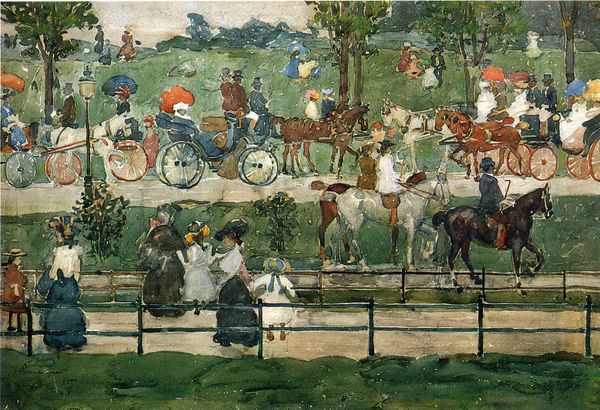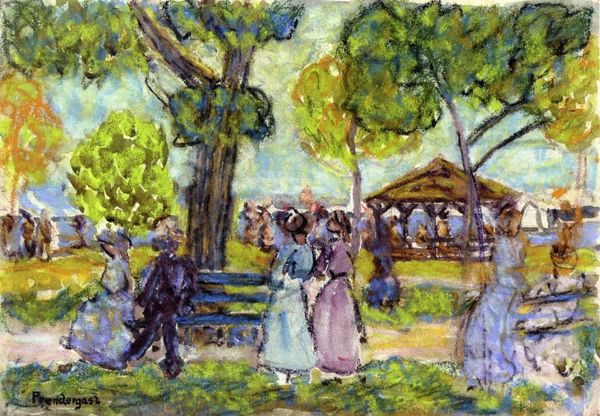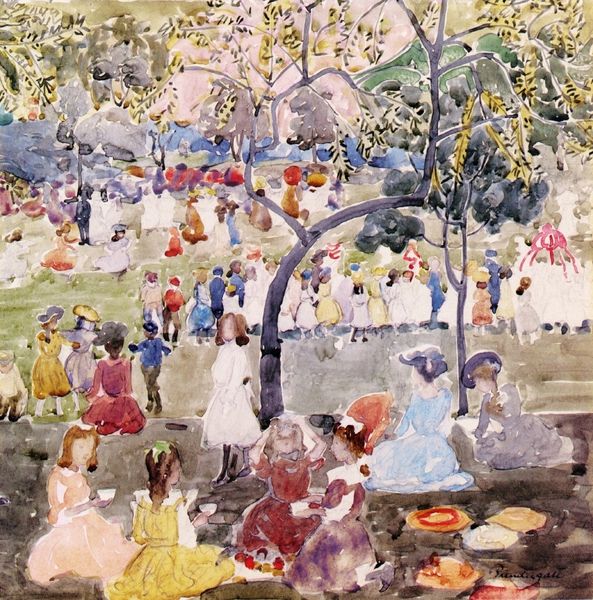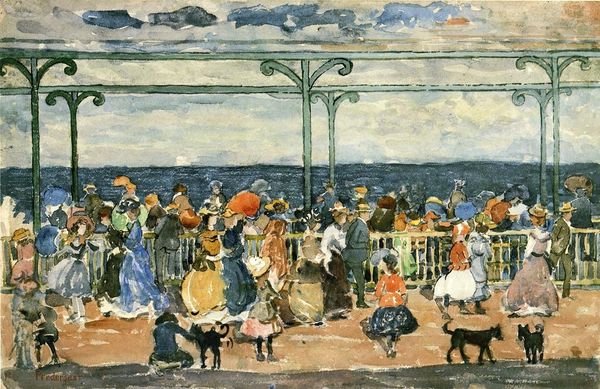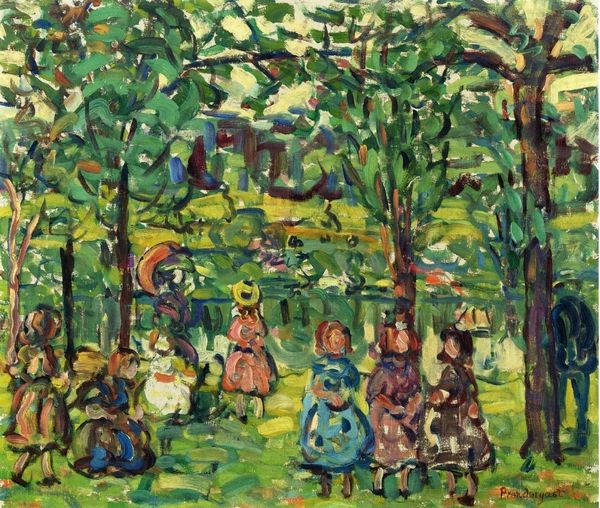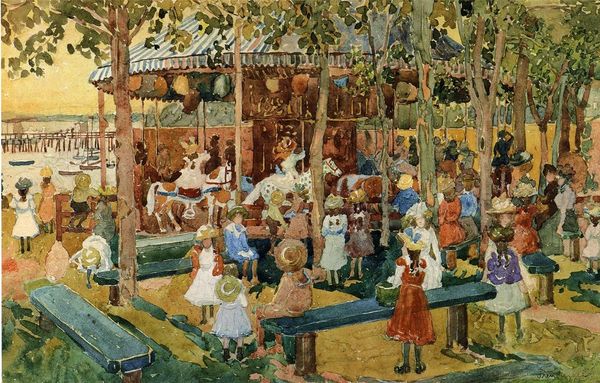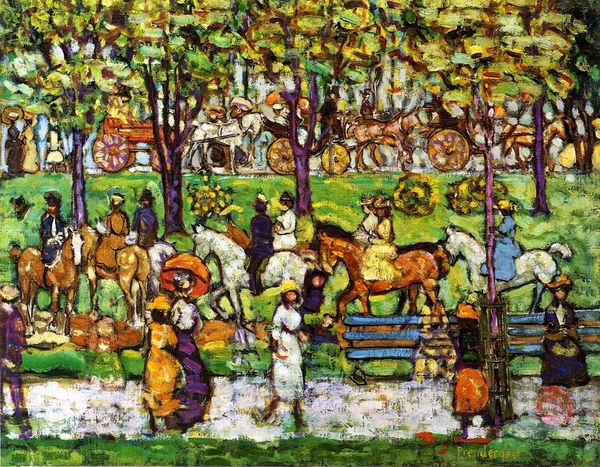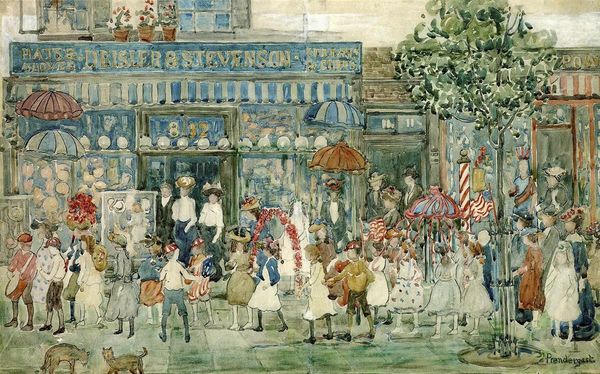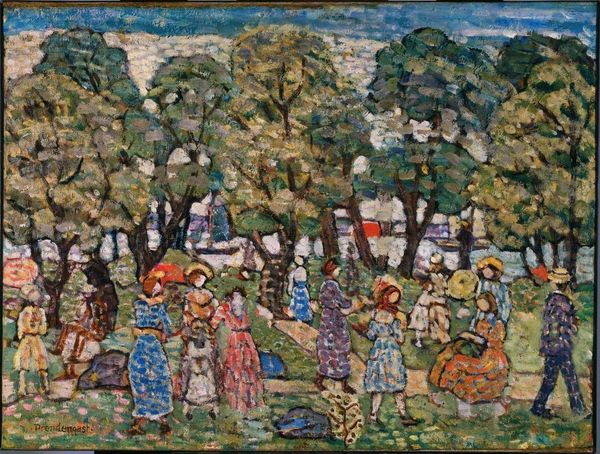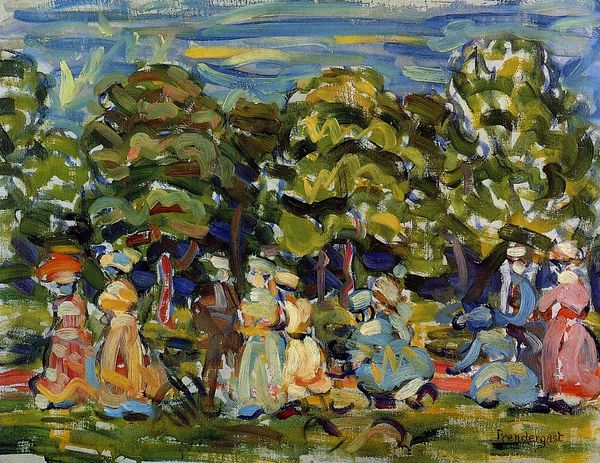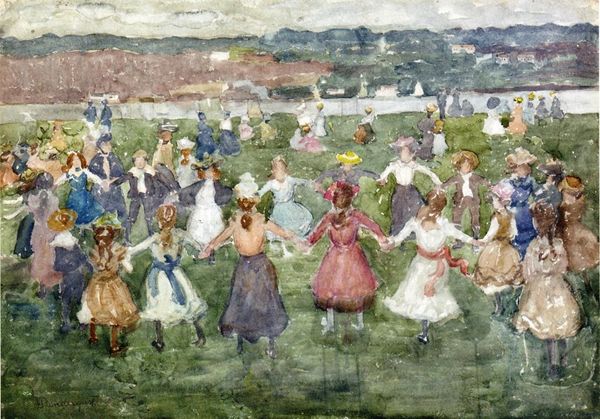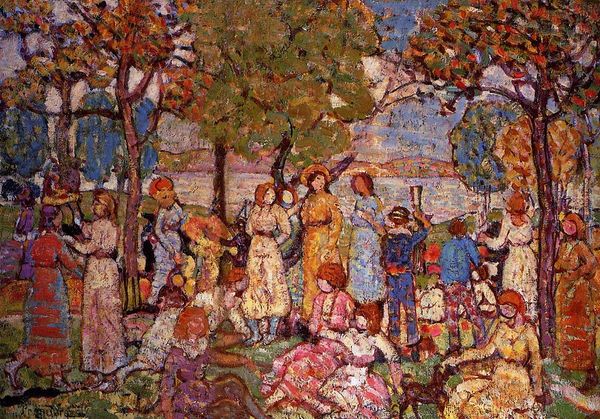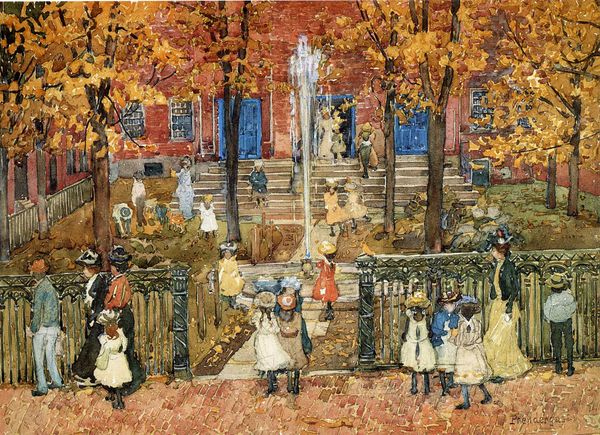
Dimensions: 36.51 x 55.25 cm
Copyright: Public domain
Curator: Looking at "The Bridle Path, Central Park" by Maurice Prendergast, painted in 1902, what’s your initial impression? Editor: It's charming! Breezy and light, like a snapshot of leisure. The loose brushwork and watercolor give it a sense of immediacy. It really captures a moment in time. Curator: It certainly does. Prendergast's choice of watercolor, especially when applied en plein air, speaks volumes about accessibility. This wasn’t about laboring over oil paints in a studio; it's about quickly capturing the fleeting moments of everyday life. He collapses the distinction between sketch and finished artwork. Editor: Right, and think about Central Park at the turn of the century. It was designed as a space for social mixing. A deliberately constructed landscape intended to mold the behavior of its citizens. Paintings like this reinforce those intended uses. Curator: Exactly! And look at the layered application of the pigments. It's fascinating how Prendergast builds up the image, almost like weaving colors together, playing with translucency. One could consider this use of medium akin to contemporary textile production where labor is materialized in the stratification of warp and weft. Editor: And who is he showing? The subjects—the well-to-do riding horses and carriages—demonstrate who has access to this "public" space. Prendergast isn’t just depicting a park; he’s showing a stage for social performance, a curated slice of urban life for the upper classes. The carriages imply industry as well, and the labor that goes into such elaborate construction and decoration. Curator: Yes, it also makes me think about the shift toward ready-made art supplies that were becoming available, which made artworks such as this even more accessible and quicker to realize than previous artworks, so that it allowed to make art for a bigger and more accessible social group. Editor: Which, ultimately, reinforces the idea that art reflects and reinforces the values of its time. It really lets us peek at the politics of leisure at the turn of the century. Curator: I find Prendergast's engagement with his materials truly compelling when understanding the social context of that era, how everyday practices were evolving because of production and consumption patterns. Editor: And I’m struck by how artworks such as these act as a portal, providing us with a window into history by inviting reflection on the intended purposes of public works and civic spaces such as Central Park.
Comments
No comments
Be the first to comment and join the conversation on the ultimate creative platform.
